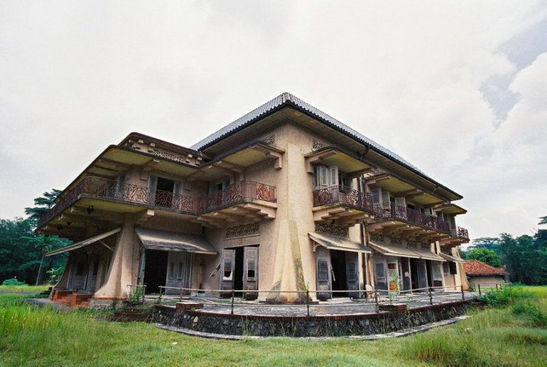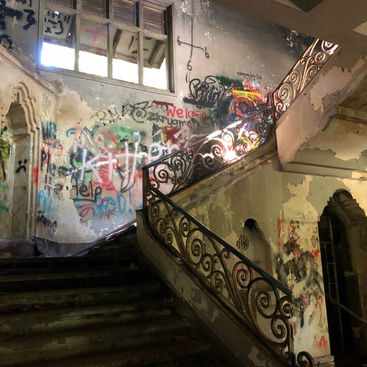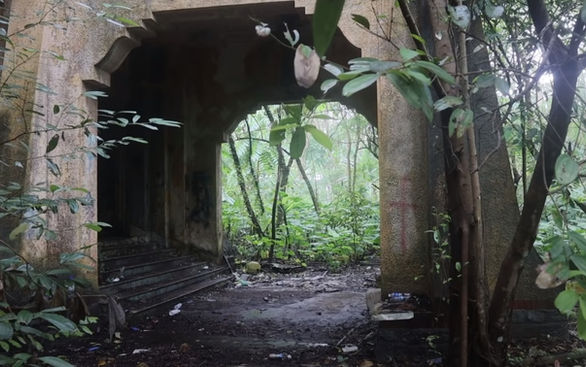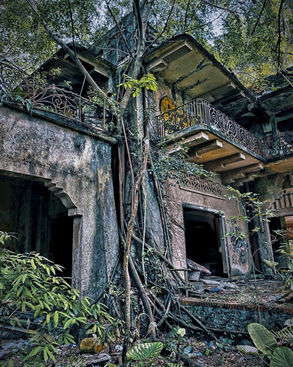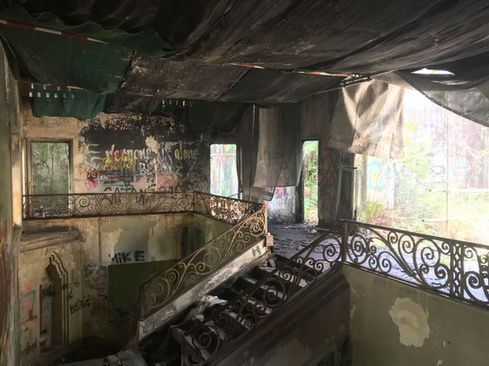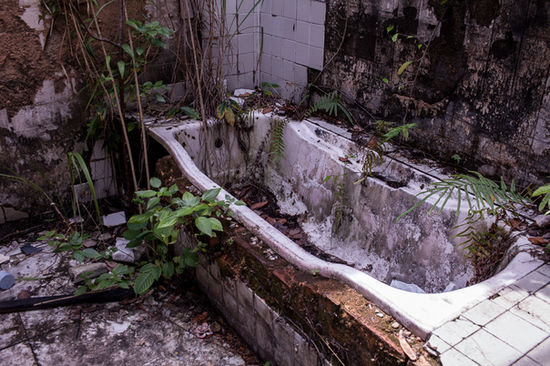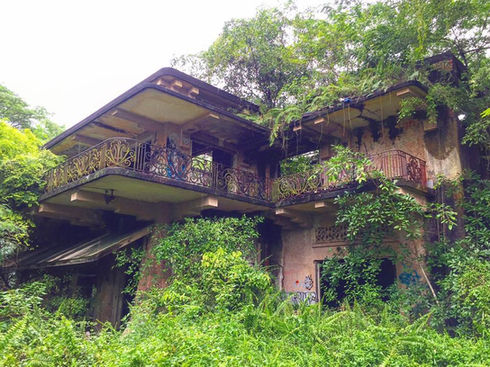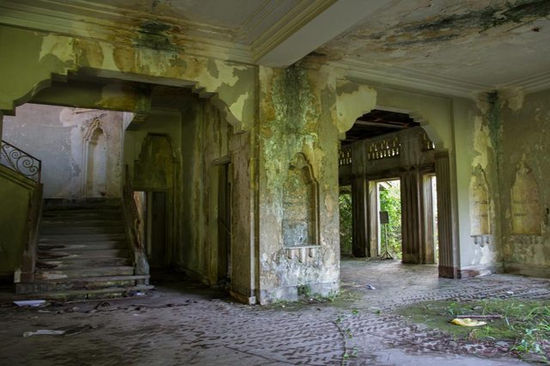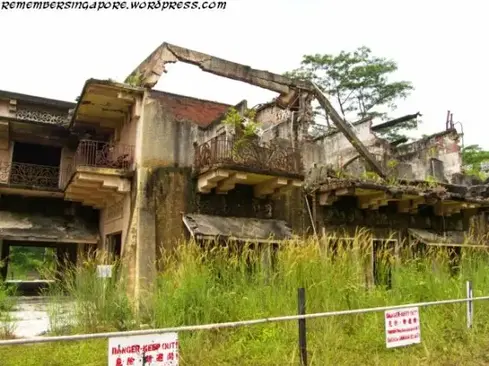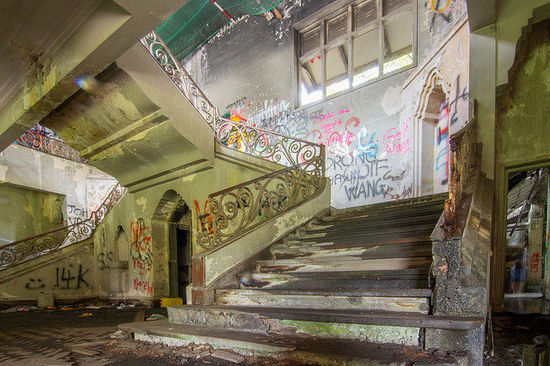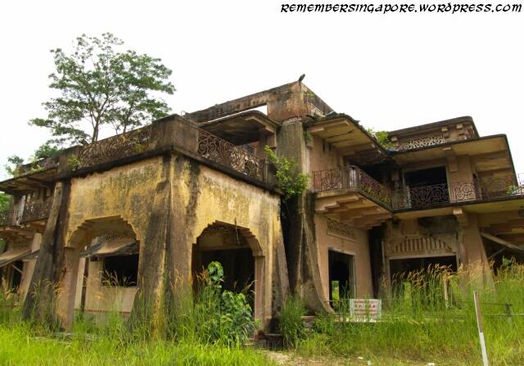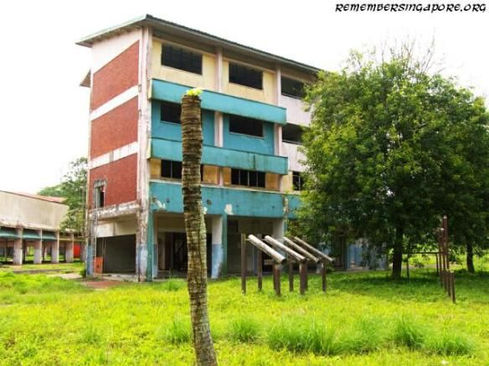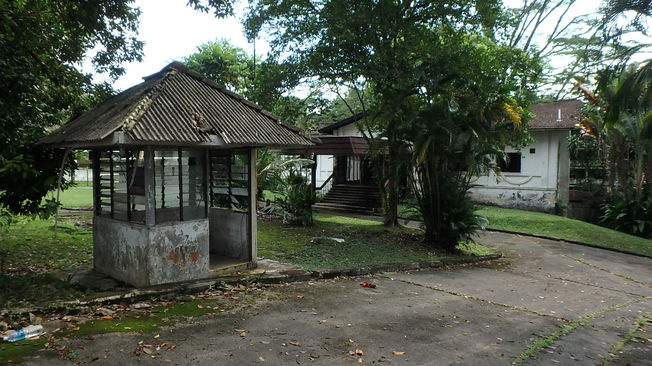

HILMANBASRI.COM
ABANDONED SINGAPORE
Despite its small size, Singapore is a treasure trove of hidden, abandoned places that captivate explorers and thrill-seekers alike. These forgotten sites offer a glimpse into the past, standing as silent witnesses to history in a city-state that is constantly evolving.
One of the most famous abandoned locations is the Old Changi Hospital, renowned for its eerie atmosphere and ghostly legends. Originally built in the 1930s, it served as a hospital for British soldiers before being used by the Japanese during World War II. Today, its crumbling corridors and overgrown grounds are a magnet for those fascinated by the paranormal.
Another intriguing site is the Neo Tiew Estate, an abandoned public housing estate that was vacated in the early 2000s. Used occasionally for military training exercises, its empty buildings and deserted streets provide an eerie setting for urban explorers.
Additionally, the Tanglin Hill Brunei Hostel, once a bustling residence for Brunei students in the 1970s, now stands abandoned, its walls covered in graffiti and nature slowly reclaiming the land.
These sites, among others, offer a stark contrast to Singapore's modern skyline and showcase the island's layered history, providing adventure and mystery for those daring enough to explore them.
4o

ISTANA WOODNEUK
Istana Woodneuk is an abandoned two-storey palace at the former Tyersall Park, bounded by Holland Road and Tyersall Avenue, near the Singapore Botanic Gardens in Singapore. Before it was rebuilt in 1935 it was known as Istana Woodneuk. It suffered a major fire in 2006 and has been deemed beyond repair. The remains of the palace, as well as the land it sits on, is private land belonging to the State of Johor. It is not charted on most modern maps and is currently not accessible to the public. The grounds, including Tyersall Park, are plotted on Google Maps but are marked as "Permanently closed".
The former palace is commonly confused with the demolished Istana Tyersall, which was nearby. The most obvious difference between the two former palaces is the colour of the roof tiles: Istana Tyersall had red tiles, while those of Istana Woodneuk were blue.

OLD CHANGI HOSPITAL
Changi Hospital is a now-defunct and abandoned general hospital located in Changi, Singapore. Its closure came with the merging with the former Toa Payoh Hospital and was renamed as the Changi General Hospital, which relocated new operations to nearby Simei, not far from Changi. It began winding down activities in February 1997 (completely abandoned in December that year) and remains abandoned to this day, but is off limits to the public.
The vacated hospital compound was popular with film-makers after the Singapore Land Authority commenced a short-term rental programme of the abandoned and derelict buildings that was once Changi Hospital. Many popular MediaCorp television series such as Growing Up, The Crime Hunters, C.I.D. and Incredible Tales were partly filmed at the now-abandoned hospital, which by the 2000s was already badly damaged and entirely desecrated by hundreds of vandals, criminals, drug-users and possible Satanists. Around this time, Old Changi Hospital, as it is popularly known, was famously declared by many Singaporeans, young and old alike, to be one of the most haunted locations in the whole country. The buildings are said to be haunted by the souls of the victims of the Japanese Occupation, homeless ghosts and the spirits of those who died in the hospital. In 2017, a video of sightings of a nurse carrying a baby in the haunted hospital circulated around the Internet, sparking debate on its authenticity and the spookiness of the former hospital and the supposed paranormal activities inside.
Until now, the authenticity of this video has not yet been proven. The once-abandoned and derelict buildings and its ghostly reputation were the basis for the 2010 mockumentary Haunted Changi, which, using found-footage, told of a small group of paranormal investigators going inside the hospital to learn of its horrifying past and ended with terrifying outcomes to each member. Some of the more prominent areas of the old hospital that was famous for hauntings include the old mortuary which has since been demolished, the tile-walled operating theatre and the old hospital's Accident-and-Emergency (A&E) building (located below the hill from where the main hospital is located at has long been demolished already). There is also a widespread belief of the presence of supposed underground bunkers beneath Changi Hospital (from the days when it was a military base), although there is currently no available access to them and their alleged entry-points (rumoured to be 3) are also closed off. A picture had been taken at Changi Aloha Chalet near the hospital and allegedly showed what was seen as a ghost.

LIM CHU KANG PIER
The Cashin House, known as The Pier, is a former residence of the Cashin family extending out to sea in Lim Chu Kang, Singapore. The house on the pier was restored and became a new visitor gateway to the western part of Sungei Buloh Wetland Reserve known as Lim Chu Kang Nature Park.
The Lim Chu Kang area in Singapore, was once made up of mangroves rain forests and rubber plantations belonged to Namazie and Cashin Estates. A pier was built in 1906 by Henry Cashin, an Irish merchant, for his rubber estate. Henry Cashin's grandson, Joseph Cashin, would build a house on the pier some time from 1920 to 1921, hence the name The Pier.
The Pier was also one of the sites where the Imperial Japanese Army first landed on the north-western coastline on 8 February 1942. Once Kranji and Lim Chu Kang fell during the Japanese Occupation of Singapore, the Japanese went on to erect a war shrine at the site. The house was used by Imperial Japanese Army officers as a comfort stop until 1945.
In the 1960s, before the rubber plantation owner and lawyer Howard Edmund Cashin (1920–2009) and his wife Gillian moved into the house, he had the war shrine removed and constructed the road to the house.
According to Howard Cashin in the interview, the Japanese war shrine was something that he had difficulty removing after the war as it was not easy to find workmen willing to demolish the shrine during that time, as the stone from the pedestal of the shrine had stood on was used to construct the road to the house that he wanted to add on.
The house was extended and redesigned, its interior was redesigned with a modern touch, with ceiling fans, aircon and other facilities powered by electricity. Barbeque pit and stone tables were the later additions on the landed compound near The Pier. Cashin and his family would lived at The Pier occasionally as their weekend resort until his death on 5 September 2009.
The house has since vacated and its compound was acquired and fenced up by the Singapore Land Authority. According to URA Draft Master Plan 2013 and URA Master Plan 2014 regarding the Singapore's North Region, the house will be restored and become a visitor gateway to the western part of Sungei Buloh Wetland Reserve.
The 18-ha western extension of Sungei Buloh Wetland Reserve was named as the upcoming Lim Chu Kang Nature Park in 2020.[6] Restoration work on the house and the Lim Chu Kang Nature Park were expected to start in the fourth quarter of 2020, and both are slated for completion in early 2022 which was subjected to the coronavirus pandemic.

NEO TIEW ESTATE
Yet again I'm playing catch up as this was something I actually did a long time ago but am only just managing to post. I'd heard (and read) a little bit previously about an abandoned HDB estate in Singapore. I've always been interested in abandoned buildings and despite Singapore's willingness to continually develop there are surprisingly quite a few dotted around. Though many aren't easily accessible (if at all) or at least, in some cases, I don't fancy trying to get to them. I therefore assumed this place was probably in the same category of incredibly difficult to get too and it was only when I stumbled across this list of things to do in Singapore before you die (number 40 on the list by the way) that myself and a friend figured it might actually be a possibility.
Although Singapore isn't exactly big I admit that sometimes places seem a long way away but getting here definitely wins the prize for the longest journey I've done I'm sure. By the time we got there we seemed to have been on various buses all day and had gradually left behind condos, HDB estates and their communities for a landscape of various huge graveyards and military bases. It was another reminder that if you know where to look for it there is still a lot of open space in Singapore. By the time we got off our last bus most of our fellow passengers were servicemen (we were certainly the only women on board) and we no doubt looked as if we'd got hopelessly lost somehow! Despite appearances though we were exactly where we wanted to be and heading to the abandoned estate.
Neo Tiew Road where the estate is located was named after Mr Neo Tiew (1883 - 1975) in recognition of his contributions towards developing the Lim Chu Kang village. He led workers to clear the forested areas nearby, paved roads, built workers quarters, grew coconut trees and developed pineapple, pig and poultry farms. He also set up the first mini-mart in the area to ensure a constant supply of daily necessities for the workers. Later he also helped to develop a school and a delivery hospital too.
The estate was built in 1979 and closed in 2002 with the residents moved to Jurong West. The abandoned flats are accompanied by a wet market and a playground and somehow it is one of those left behind places in Singapore that has managed to survive. I guess this may have something to do with the fact that the armed forces now use it for practice exercises at times. I've since learnt that the estate was also known as Lim Chu Kang Rural Centre. Apparently a number of HDB estates from this period were known as such because they housed relocated farmers who were then allowed to continue their farming activities. This was phased out shortly afterwards as Singaporeans were encouraged to take up non-agricultural jobs instead.
The Neo Tiew area is included as part of the Kranji Heritage Trail which was launched in 2011 and covers several historical and agricultural places of interest in the Kranji area. Have a look at their useful website here for more details of what else you can see and visit in this part of Singapore.

TANGLIN HILL BRUNEI HOSTEL
Located at the end of Tanglin Road, the Brunei hostel was constructed by the Brunei government in the mid-1950s to provide accommodation for Brunei students studying in Singapore. The hostel opened in 1958 and was known as Asrama Kerajaan Brunei di Singapura (AKBS) or Tanglin (Hill) Brunei Hostel amongst locals.
Prior to the construction of the hostel, many Bruneian students were residing around Jalan Haji Salam and Geylang. The hostel not only provided lodging for Bruneian students, students from Malaya shared rooms with them. Due to the increased number of students, a multi-storey dormitory block was added later.
As Brunei developed its own education system, the number of students that were sent overseas for secondary education gradually declined. As a result, the Brunei government decided to close down the hostel in 1983 and it has been left abandoned ever since.
The hostel provided facilities such as meals, laundry, textbooks, and allowances for the students it housed, making their lives convenient during their life abroad. For many, it would have been their first time living alone and traveling away from their families in Brunei, with limited communication compared to what is available today.
Despite initial challenges, the students quickly adapted to hostel life and created happy memories. Sports, especially football, were popular among the students, and national events were celebrated at the hostel, fostering a sense of Bruneian heritage. With the development of elite secondary schools in Brunei by 1983, the need for sending students to Singapore diminished, leading to the closure of the hostel. Today, the abandoned Tanglin Brunei Hostel stands as a reminder of its proud history as a residence that catered towards Bruneian students.
The AKBS is a must-visit because it is a hidden gem, located in the very unsuspecting, posh neighborhood of Tanglin, yet its haunting Colonial style will haunt you with the deep admiration for where present-day Bruneian politicians once lived. Visitors to the Brunei Hostel have reported strange experiences and feelings, although nothing violent or sinister.
It is believed that the abandoned place holds more historical significance and memories than actual paranormal activity. With that being said, you are only able to see the hostel legally from the outside as it remains a private property of the Brunei Consulate. You can be assured that to look at it from the outside alone is enough to deeply admire the life that the buildings once contained.

CHEE GUAN CHIANG HOUSE
Orchard Road, a.k.a. the Times Square of Singapore. With its bright lights, billboards, and stretch after bustling stretch of malls, it’s hard to picture that just streets away lies Chee Guan Chiang House, an abandoned mansion shunned from the sights and sounds of the city.
This is a house like no other. The derelict bungalow sits amid a chaotic huddle of overgrown flora in place of a perfectly manicured garden, with a shoddy driveway that leads directly to a home that’s actually worth millions.
$425 million, to be exact.
Quietly situated at 25 Grange Road, the house was commissioned by Chee Guan Chiang, the eldest son of Chee Swee Cheng – the very first chairman of the OCBC Group, who hailed from Malacca. The house was designed by architect Ho Kwong Yew, who was known for his unique art deco style that was all the rage back in the day.
Mr Ho was also the man behind the now-demolished Haw Par Villa residence, which had similarly rounded verandas and dome roofs.
Though widely known as Chee Guan Chiang House, it was actually first christened as Wellington House. Miss Yvonne Lee-Khoo, the great-granddaughter of the older Mr Chee, shared that he was inspired by the word “well” meaning ‘good’ and it sounding like the word ‘wealth’. In fact, the initials “WH” can still be seen imprinted on the iron columns around the veranda and staircases till today.
Unfortunately, the house wasn’t occupied for long after it was fully constructed in 1938. World War II hit Singapore shortly after this, and the house was left empty after the Chee family left the country because of the Japanese Occupation in 1941.
After WWII, the bungalow was made into a guest house for travellers called the Leonie House, later being renamed New Leonie Guest House when new management came on board in 1964.
The struggle over the land that Chee Guan Chiang House sits on dates back to 1919, when it was subdivided into the following lots: four houses, and one road.
Almost six decades later in 1973, three houses were sold to Lee Tat Properties. The remaining house was sold to Grange Heights condominium, which wanted to convert the land into a garden and tennis court.
Things started getting messy after Grange Heights’ contractors began using the road on the land for easy access. Lee Tat decided to buy over Grange Heights to prevent this from happening further, but the case was dismissed.
To make matters more complicated, Lee Tat then built an iron fence to block condo residents from using the road in 1989, proceeded to lose yet another case, and then bought the road over in 1997.
However, the story doesn’t end there. It’s been 20 years since, and after several more visits to the court, Lee Tat finally won the legal battle in December 2008.
Though it was so seemingly sought after all through the years, Chee Guan Chiang House fell into disrepair and was never occupied since its days as a guest house in the 1960s. But don’t let its dilapidated facade fool you even for a second – the land is said to be valued at an insane $425 million. With its size and prime location, it’s no wonder why.
For a country so small, you’d think we’d have covered every inch of it by now. But unbeknownst to us are pockets of the forgotten past peppered all across the island – even in a place so frequently visited like Orchard.
Chee Guan Chiang House is just one of many abandoned spots in Singapore that has seen its fair share of curious urban explorers and paranormal enthusiasts looking for a thrill.

